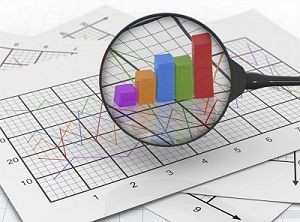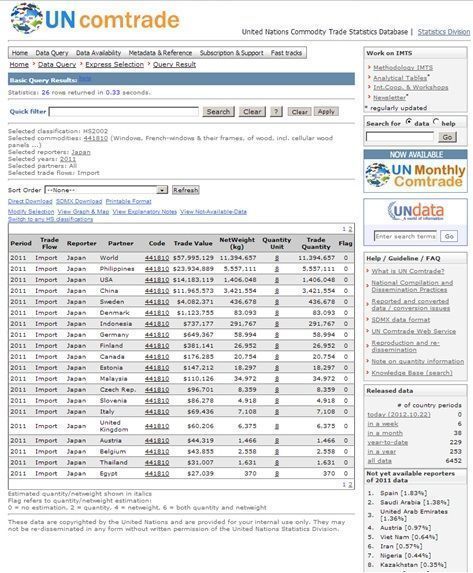
When a company decides to sell (export) or buy (import) its products in international markets is essential to know the statistics of international trade of that product that can be obtained freely on The Internet and in a few minutes. This information is really useful to design the international marketing strategies and negotiate operations. In this article we always refer to international trade of goods (tangible products) because for international trade in services (intangible) there are no detailed statistics.
The three steps to obtain international trade statistics are:
1. Identify the tariff code of the product you want to export or import
Tariff codes consist of 8 digits refer to chapter (digits 1 and 2), code (3 and 4), sub-code (5 and 6) and position (7 and 8). For the purposes of international trade statistics, there will be necessary to identify only the first six digits and, if not possible, the first four.
International trade statistics are very useful to design international marketing strategies and negotiate export and import operations.
Identification of tariff codes for each product can be made through the website Taric The search path for the tariff code for a specific product is:
www.taric.es – link of “Aplicaciones online” – Net Tariff Taric – in the window of “search” put the name of the product to be exported or imported – from tariff codes that appear choose the most conforming to the product being sought.
For example, if you are looking for the product “gates”, it will appear several tariff codes including doors and windows. If you are searching the code for “wooden doors” the most appropriate will be 441820 (“Doors and their frames and threshold”), but in general to identify correctly the code, you will have to analyze in detail the type of product to be exported or imported.
Tariff code for the product “gates” (www.taric.es)
2. Obtain international trade statistics (export or import)
Once you know the tariff code, the second step is to obtain through Internet statistics of export and import of the country or countries of your interest. You can get that information for free and in a few minutes through the United Nations website Comtrade, although the search path is somewhat complex. It is as follows:
http://comtrade.un.org/db – Data availability – by reporter – choose country-year in the first column – check “I have read Readme” – choose import / export – quick filter put in tariff heading (4 or 6 digits ) – search – select HS2002-Apply
Thus, in the example above for the product “wooden doors” if you want to know the imports of Japan of that product the data obtained is that Japan imports “wooden doors and windows” for a total of 189,3 MM USD (year 2011), especially from the China (129,7), Philippines (22,0 and Malaysia (19,5).
Imports from Japan of “wooden doors and windows” (Comtrade)
If you search for trade statistics of countries in the European Union or Latin America there is is two other websites below, whose use is free of charge:
- Export Help Desk: in the Trade Statistics Section there are available exports and imports of products, according to tariff code, from the 27 member countries of the European Union.
- Aladi: in Section of “Estadísticas/Comerio Exterior de Bienes” there are available exports and imports of products, according to tariff code, from the 13 countries that are members of this organization.
3. Statistical analysis
Once statistics of export and imports have been obtained, the next and final step is to analyze them. To do this it is best to get the statistics for the last three years so you can see the evolution of international trade for the country and product being analyzed.
For a company that wants to export a product to a given country, the information can be obtained analyzing international trade statistics is:
- The size of the market, that which will be the total import volume of a particular product, expressed in dollars.
- Market evolution: growth or decline in imports in the last three years.
- Main importing countries.
- The position of the country from which you want to export.
- In some products, the average price per unit.
All this information is very useful to design international marketing strategies and negotiate export and import operations.
 To access directly to main international trade statistics websites, click here.
To access directly to main international trade statistics websites, click here.






